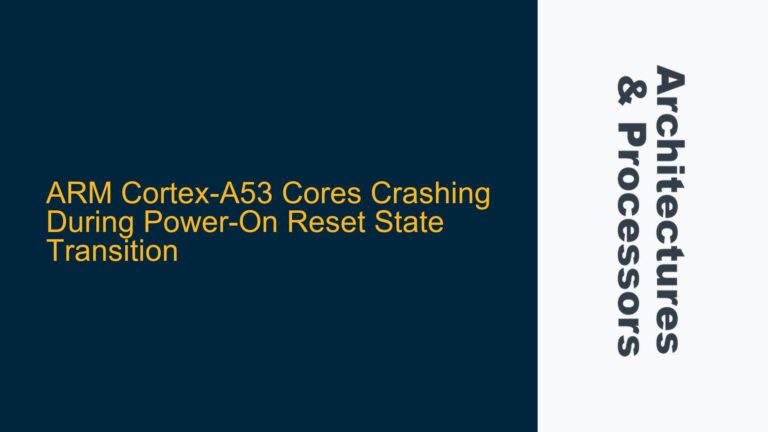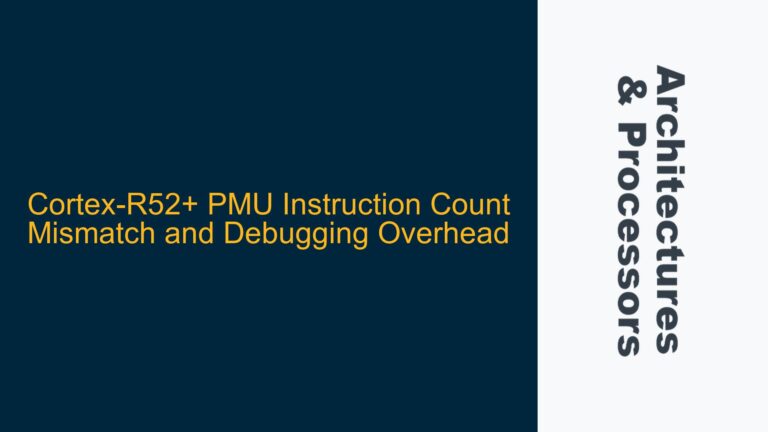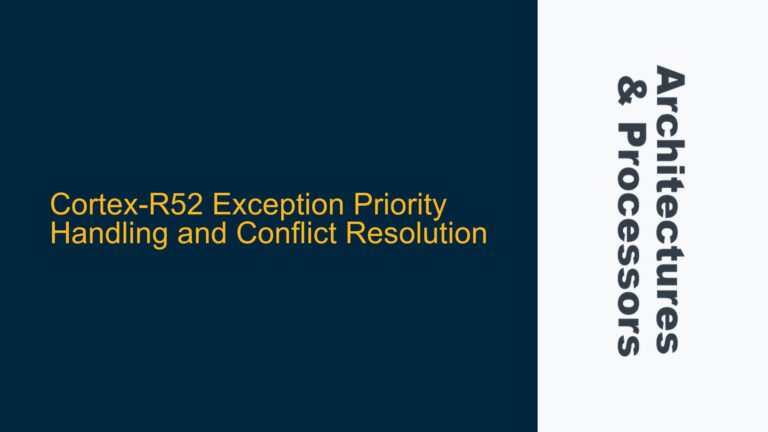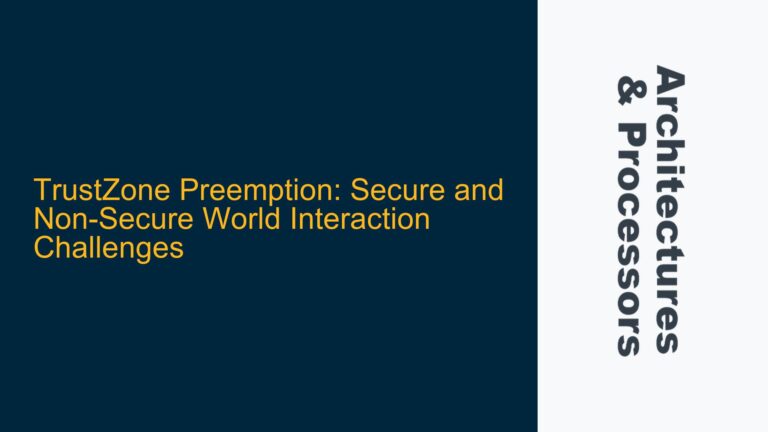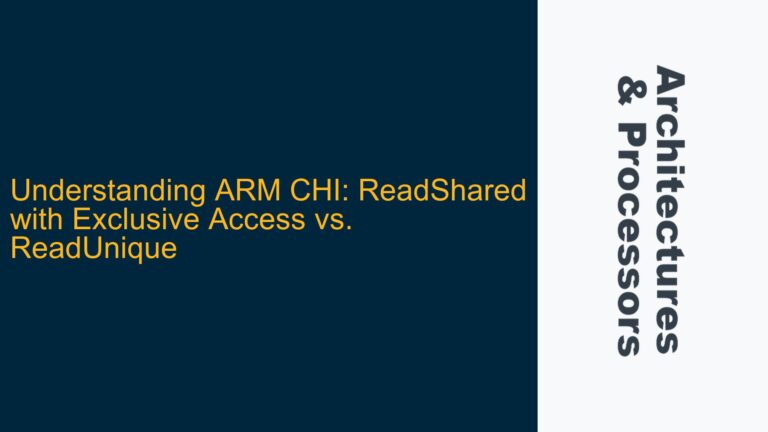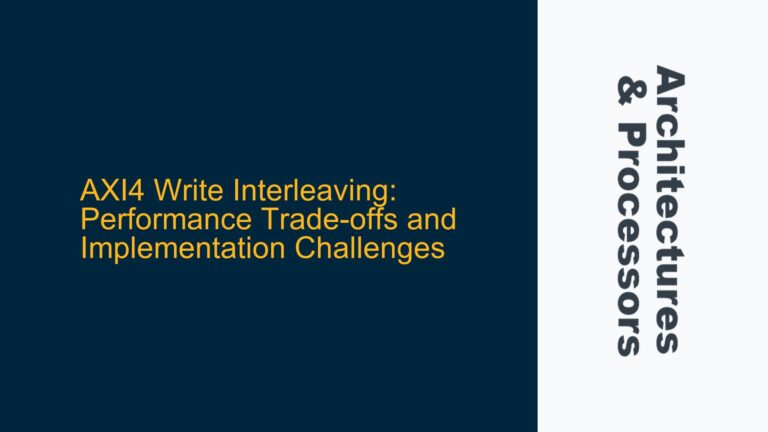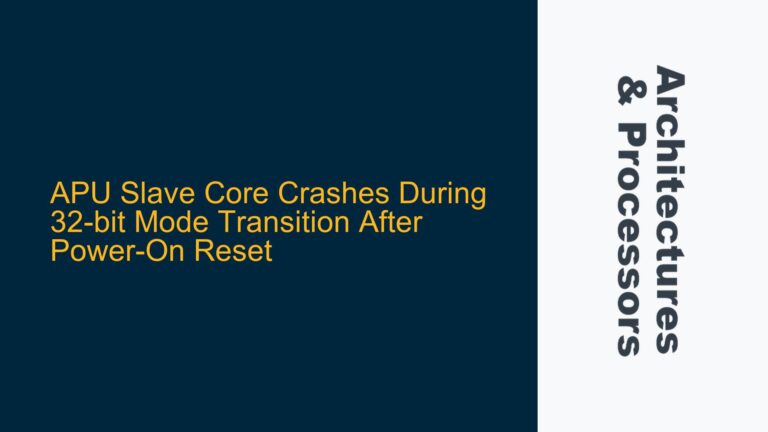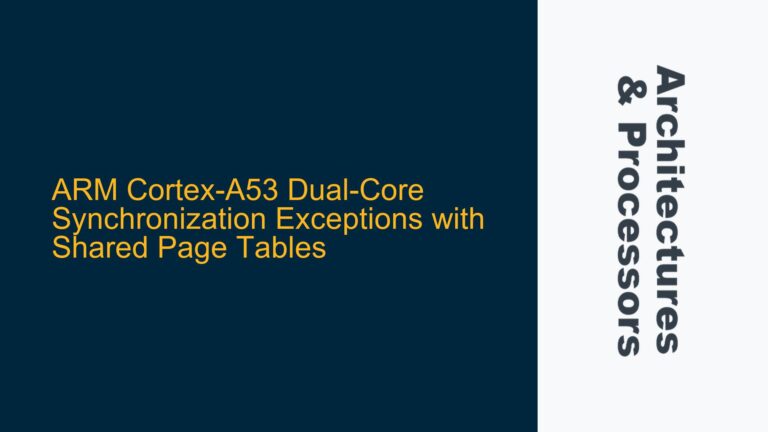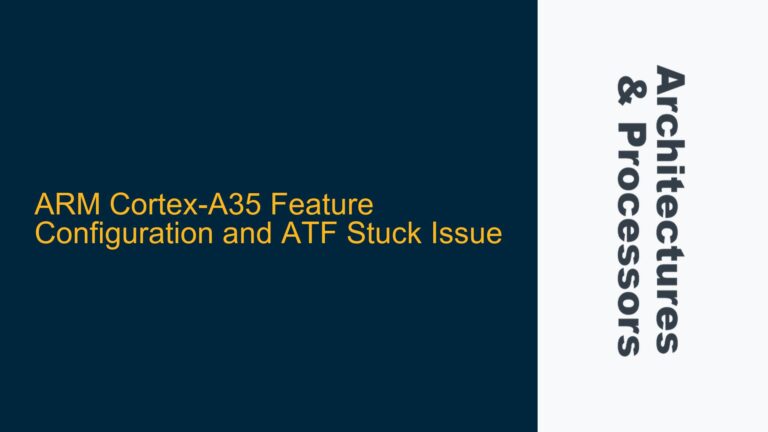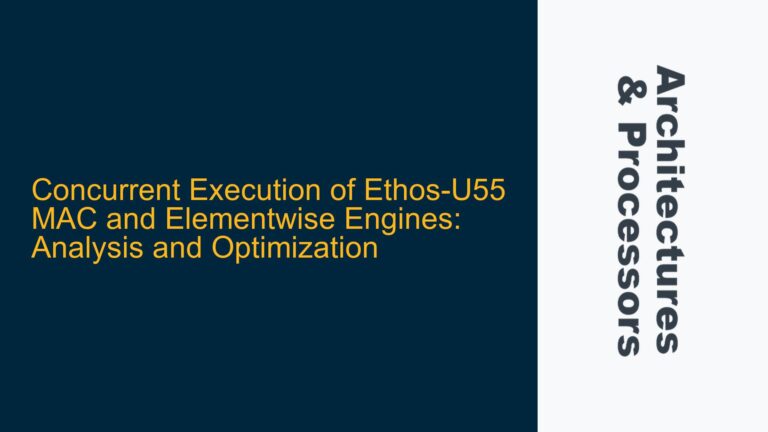ARM Cortex-A53 Cores Crashing During Power-On Reset State Transition
ARM Cortex-A53 Cores Crashing During 64-bit to 32-bit Mode Transition The issue at hand involves ARM Cortex-A53 cores 1, 2, and 3 crashing when transitioning from a power-on reset state to an execution state during a boot process that switches from 64-bit mode to 32-bit mode. The system initially runs a Built-In Test (BIT) in…
